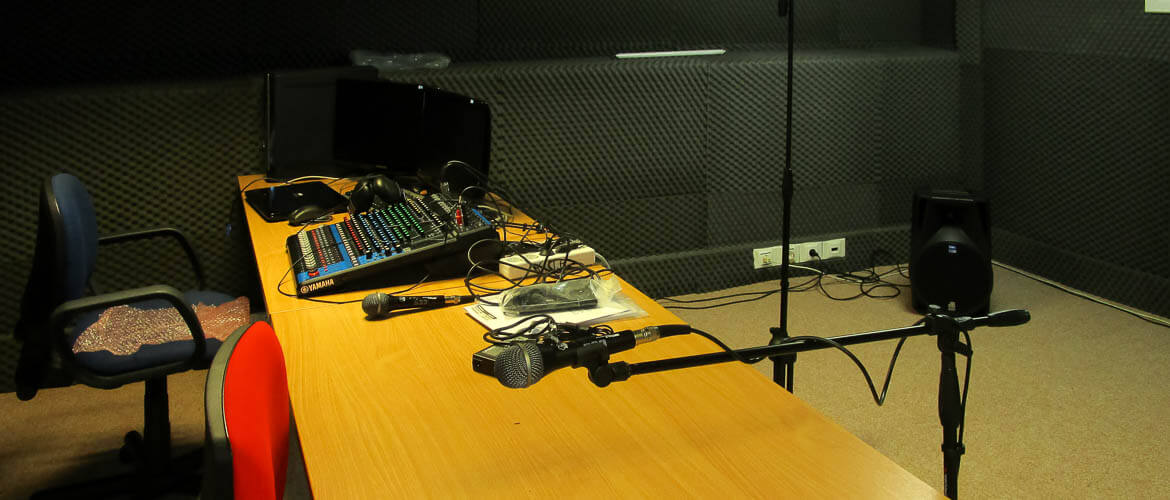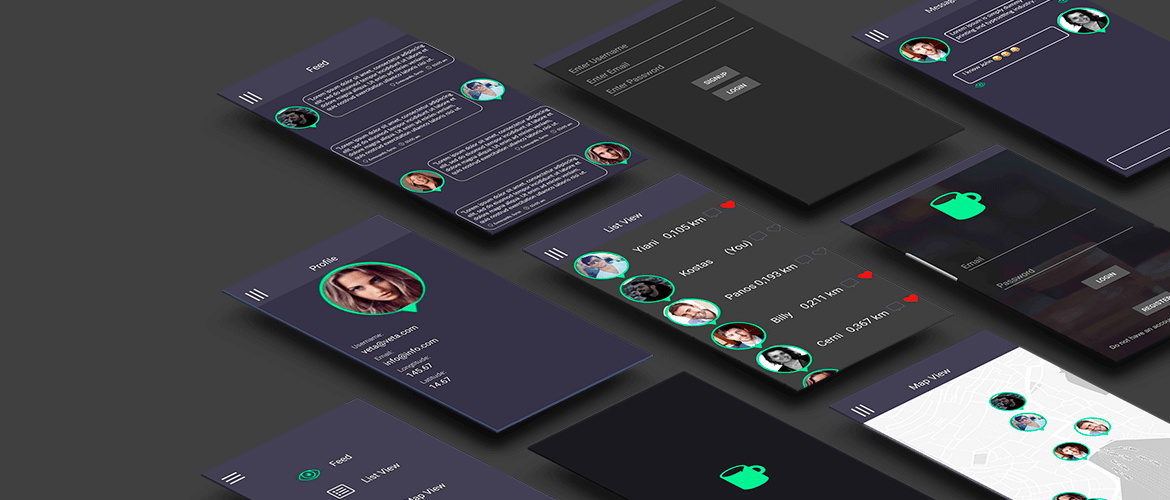Mission Statement
The Interactive Systems Design Lab (ISD) of the Department of Product and Systems Design Engineering (DPSD) is active in the fields of:
- Human-Computer Interaction
- Virtual reality
- Virtual worlds
- Information Systems
- Ubiquitous computing
- Natural User Interfaces
- Physical Computing
- Animation
- Digital Art
The mission of the workshop is both educational and research oriented. The objectives of the laboratory are
- Carrying out relevant undergraduate courses of the DPSDE and of the postgraduate studies program through demonstration and use of examples of interaction, applications, technologies and tools of design-development-evaluation.
- Supervision of final diploma theses of the department and of the postgraduate studies programme
- Undertaking talks, seminars and workshops.
- Organising and participating in summer schools and programs of remote education and lifelong learning.
- Supervision of doctoral research
- Support of research projects of the DPSD, funded and non-funded. Representation and participation of the Department in National and International collaborative research and development programme.
- Support of collaborations of the department/laboratory with other research groups, sectors and laboratories, such as such as student exchanges, hospitality and support of scientists, visiting professors, etc.
The services offered by the laboratory are
- Carrying out of national and international research projects
- Support of doctoral, postgraduate and of final year (undergraduate) diploma theses.
- Undertaking of consulting or development projects and studies
- Organisation of seminars/workshops/conferences/Summer schools
- Laboratory support for undergraduate and postgraduate courses
- Presentation of research results in scientific conferences, journals, etc.
- Cooperation with other research centres and universities both in Greece and abroad.
Research Areas
-
Natural interaction (physical interaction) with the PC and new examples of interaction with non-traditional interfaces, such as multi-tactile interfaces (large screens and handheld telephones-multi touch interfaces), kinesthetic interaction, gaze interaction etc.
-
Virtual and augmented reality and immersive virtual environments with emphasis on applications and usability studies.
-
Evaluation of user experience, with emphasis on usability, accessibility, collaborative work and field studies
-
Multi-user virtual environments and virtual worlds with emphasis on their utilisation in the design (e.g. products, interiors), collaborative learning, reconstitution of archaeological sites, games.
- Games, gamification and edutainment.
-
Pervasive and ubiquitous computing.
-
Physical computing and manufacture of micro prototypes for use in new portable and diffuse computing frameworks.
-
Big data and AI (artificial intelligence) with emphasis on cloud computing systems, management of geographic data or data identification of users and objects.
Facilities & Equipment
The lab is situated in rooms A.0.6 and A.0.7 of the old Gymnasium building. Equipment includes:
- A dedicated and purpose-built Data Centre to serve the IT needs of the department. In detail, our data centre provides an environment for the deployment and control of virtual machines as well as storing file systems and other services offered to staff and students (web servers, databases, VR systems, educational software etc.).
- Eye-tracking equipment (Eye tracker -Dikablis Ergoneers), can be used for:
- The design of applications with eye-gaze interaction, which can be especially helpful to people with disabilities or to offer an immersive experience in public spaces like museums etc.
- Conducting user experience evaluations where eye-tracking can be an invaluable piece of information.
- Neural Impulse Actuator - Emotiv Epoc), for:
- Research applications in human computer interaction where systems can be “thought-controlled”, for example in navigating a virtual world or for controlling the motion of a wheelchair.
- Evaluation of casual and affective user response during HCI.
- Tablets (Microsoft, Samsung, Apple) to be used for the design, development and evaluation of a wide range of multi touch applications, the design of new gestures, and conducting research and development in the areas of mobile augmented reality applications, navigation, museum apps, remote working, accessibility, geo location etc.
- Interactive Multitouch Table
- Auto-stereoscopic 3D monitor which allows multiple users to watch virtual reality educational or cultural content without the need of additional equipment.
- VR headset, magnetic 3D sensors and data gloves which can all be used in conjunction to offer full user immersion for research or educational purposes.
- Fully equipped recording studio.
- Various video cameras.
- Conventional as well as 3D printers and scanners.
- Specialised software such as user-experience evaluators (Morae Manager, Morae Observer, Morae Recorder) or 3D design (Unity 3D Pro).
Research and Development Projects
Mouseion Topos (Ερευνώ-Δημιουργώ-Καινοτομώ, 2018-2021)
TouristHub (Ερευνώ-Δημιουργώ-Καινοτομώ, 2018-2020)
SocialPARK (ΓΓΕΤ, 2018-2020)
Exploiting Oceans of Data for Maritime Applications – BigDataOcean (H2020 ICT-14-2016-2017)
SELIS – towards a Shared European Logistics Intelligent Information Space (H2020 MG-6.3-2015)
SMARTBUY - Enhanced Buying Experiences in Smart Cities (H2020-ICT-2015/687960)
HoPE - Holistic Personal public Eco-mobility (CIP7-621133, 2014-2017)
MOVESMART - Renewable Mobility Services in Smart Cities (FP7-609026, 2013-2016)
eCOMPASS - eco-Friendly Urban Multi-Modal Route Planning Services for Mobile Users (FP7-288094, 2011-2014)
BenToWeb - Benchmarking Tools and Methods for the Web, IST, 2005-2007.
Network of Excellence - IDCnet “Inclusive Design Curriculum network”, IST, 2002-2004.
IRIS - Incorporating Requirements of People with Special Needs or Impairments to Internet-based Systems and Services, 2000-2003.
Selected Publications
- Vosinakis, S. and Koutsabasis, P. (2018) Evaluation of Visual Feedback Techniques for Virtual Grasping with Bare Hands using Leap Motion and Oculus Rift, Virtual Reality, Springer.
- Koutsabasis, P. and Vosinakis, S. (2018) Kinesthetic Interactions in Museums: Conveying Cultural Heritage by Making Use of Ancient Tools and (re-) Constructing Artworks, Virtual Reality, Springer.
- S. Vosinakis, G. Anastassakis, and P. Koutsabasis, (2018) “Teaching and learning logic programming in virtual worlds using interactive microworld representations”,British Journal of Educational Technology.
- Gavalas, D., Kasapakis, V., Konstantopoulos, C., Pantziou, G., & Vathis, N. (2017). Scenic route planning for tourists. Personal and Ubiquitous Computing, 21(1), 137-155.
- Galatis, P., Gavalas, D., Kasapakis, V., Pantziou, G., & Zaroliagis, C. (2016, November). Mobile Augmented Reality Guides in Cultural Heritage. In Proceedings of the 8th EAI International Conference on Mobile Computing,
- Applications and Services (pp. 11-19). ICST (Institute for Computer Sciences, Social-Informatics and Telecommunications Engineering).
- Zissis D., Xidias E., LekkasD., A cloud based architecture capable of perceiving and predicting multiple vessel behaviour, Applied Soft Computing, Volume 35, October 2015, Pages 652-661,
- A. Dasios, D. Gavalas, G. Pantziouand C. Konstantopoulos, “Hands-on Experiences in Deploying Cost-Effective Ambient-Assisted Living Systems”, Sensors, Special Issue on “Sensors and Smart Cities”, MDPI, 15, pp. 14487-14512, 2015.
- Patsoule, E., & Koutsabasis, P. (2014). Redesigning websites for older adults: a case study. Behaviour& Information Technology, 33(6), 561-573.
- Zissis, D., & Lekkas, D. (2012). Addressing cloud computing security issues. Future Generation computer systems, 28(3), 583-592.
- Koutsabasis, P., Vosinakis, S., Malisova, K., & Paparounas, N. (2012). On the value of virtual worlds for collaborative design. Design Studies, 33(4), 357-390.
- Vosinakis, S., & Koutsabasis, P. (2012). Problem-based learning for design and engineering activities in virtual worlds. Presence: Teleoperators and Virtual Environments, 21(3), 338-358.
- Koutsabasis, P., & Vosinakis, S. (2012). Rethinking HCI education for design: problem-based learning and virtual worlds at an HCI design studio. International Journal of Human-Computer Interaction, 28(8), 485-499.



-wf8757.jpg)











